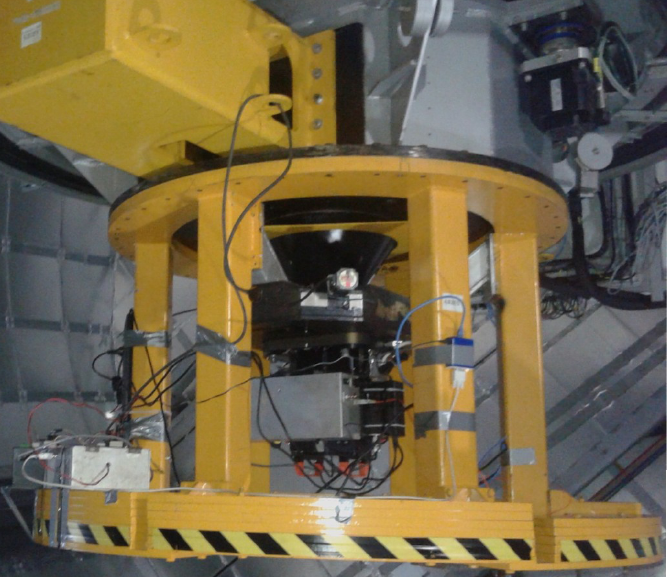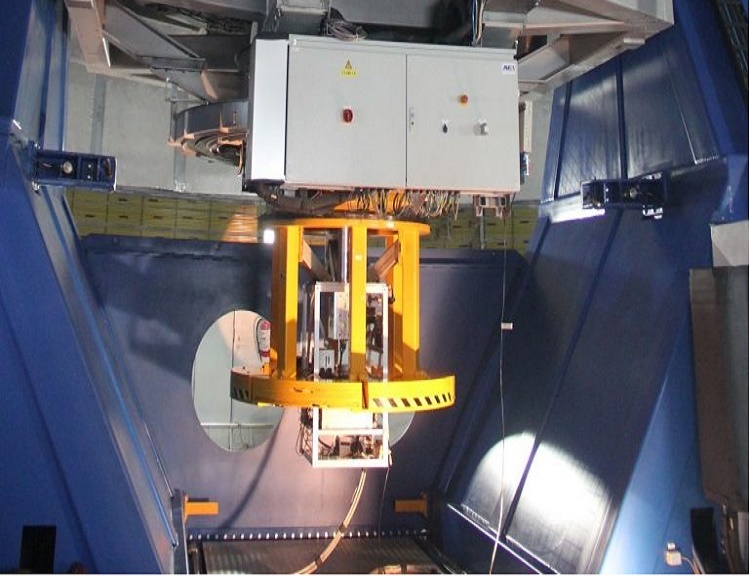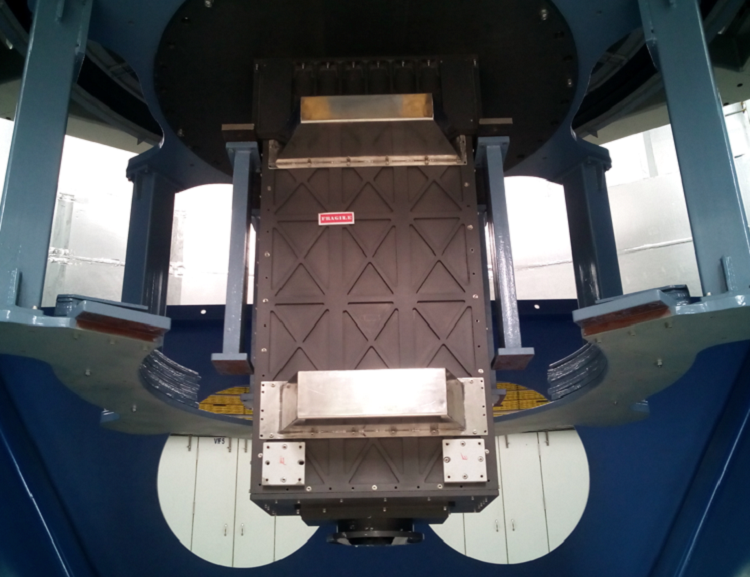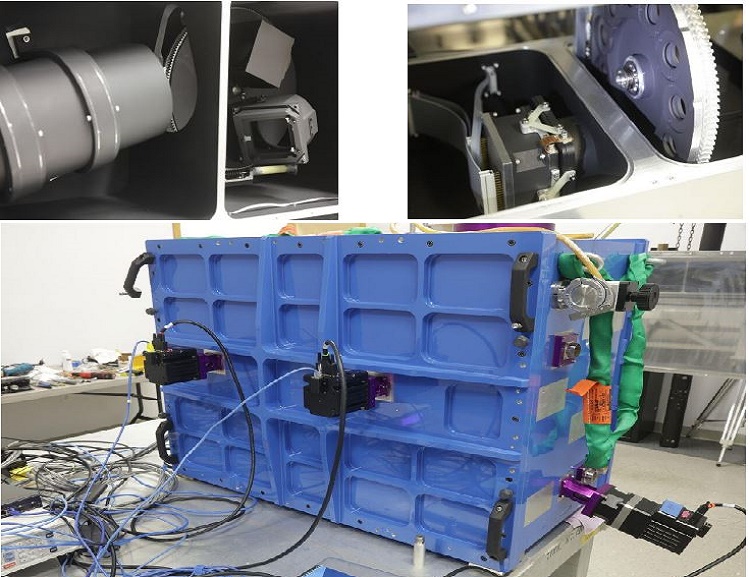Instruments
IMAGER is an optical imaging instrument covering wavelengths ranging from 400 to 900nm. It employs a 4096 x 4096 CCD camera with a pixel scale of about 0.1 arcsec on the telescope and it covers a field of view of 6.5 x 6.5 arcmin. The available filters are Bessel U,B,V,R,I and SDSS u,g,r,i,z. Imaging observations show that the instrument has the capability to observe sources up to 24.0 mag, 25.2 mag and 24.6 mag with 10% photometric accuracy in B, g, r band respectively, with corresponding effective exposures of 1200s, 3600s, and 4320s. Stellar images with FWHM of 0.55 arcsec in R-band were recorded in March 2020 in best conditions. It can only be mounted on the axial-port of the telescope. Further details on the instrument can be found here.
TIRCAM2 can provide near infrared imaging observations in the wavelength range from 1 to 3.7 microns. It employs an InSb array with a pixel scale of 0.17 arcsec and it covers a field of view of 86.5 x 86.5 arcsec. It has broad-band J,H,K and narrow-band BrG, K-cont, PAH and nbL filters. Deep imaging observations show that the instrument has the capability to observe sources upto 19.0 mag, 18.8 mag and 18.0 mag with 10% photometric accuracy in J, H, K band respectively, with corresponding effective exposures of 550s, 550s and 1000s. Stellar images with FWHM of 0.45 arcsec in K-band were recorded in best conditions. It is permanently mounted on the side-port1 of the telescope. Further details on the instrument can be found here.
ADFOSC is a low resolution slit-spectrograph and camera having sensitivity in the wavelength range 350 nm to 1050 nm. It uses a 4096 x 4096 deep-depletion fringe-suppressed E2V CCD camera with a pixel (px) scale of ~0.2 arcsec and it covers a field of view of 13.6 x 13.6 arcmin. The available filters are broad-band SDSS u,g,r,i,z and narrow-band (10.2 nm width) with central wavelengths at 491.6, 660.9, 674.3, and 683.3 nm. The spectral dispersions provided by different grisms are in the range of 0.1 to 0.7 nm/px and an 8’ long slit with different available widths (0.4” - 3.2”) can be used. Imaging observations show that the instrument has the capability to detect sources upto ~24.5 mag AB (i-band) with 10% photometric accuracy in r-band in effective exposure of ~2 hours in dark nights. Stellar images with FWHM of 0.9 arcsec in r-band were recorded in May 2020 in best sky conditions. Spectroscopic observations with the instrument show that a spectroscopic trace of g=19 mag source at 5-sigma level can be detected in 10 minutes of exposure at ~0.2 nm/px dispersion. Hg-Ar, Ne, and continuum lamps are available for spectral calibration. The CCD camera is in development mode and presently it shows some departures from linearity at low-light and bright-light conditions, which needs to be corrected using an IRAF script. It can only be mounted on the axial main-port of the telescope. Further details on the instrument can be found here.
TANSPEC is a medium resolution spectrograph and camera having sensitivity in the wavelength range from 550 to 2540 nm. It employs a 1024 x 1024 h1rg array with a pixel scale of 0.25 arcsec and it covers a field of view of 1 x 1 arcmin. It offers broad-band r, i, Y, J, H, K and narrow-band H2 and BrG filters. Stellar images with FWHM of 0.5 arcsec in K-band were recorded in Feb 2020 in best conditions. The object of 18 mag in K has been successfully detected in 1-min exposure. It is possible to detect sources at J, H, K of 19.5, 18.9, 18.4 mag respectively at 10 sigma level in 10 minutes exposure. For spectroscopy, it employs an 2048 x 2048 h2rg array and it can be used in cross-dispersed (R~2750) as well as in prism mode (R~100-350). The slits available in these modes have widths between 0.5 to 4.0 arcsec. it is possible to take R ~ 2750 (~100-350) spectra of J=14.3 (17.3) mag source in 1 hour at 100-sigma level for stellar sources with FWHM of 1 arcsec. Currently the instrument is available for imaging and low-resolution (R~100-350) prism mode spectroscopy.The availability of the high resolution mode is subject to the successful installation of a new grating and any update in this regard will be posted on the DOT website. TANSPEC can only be mounted on the axial-port of the telescope. Further details on the instrument can be found here.





